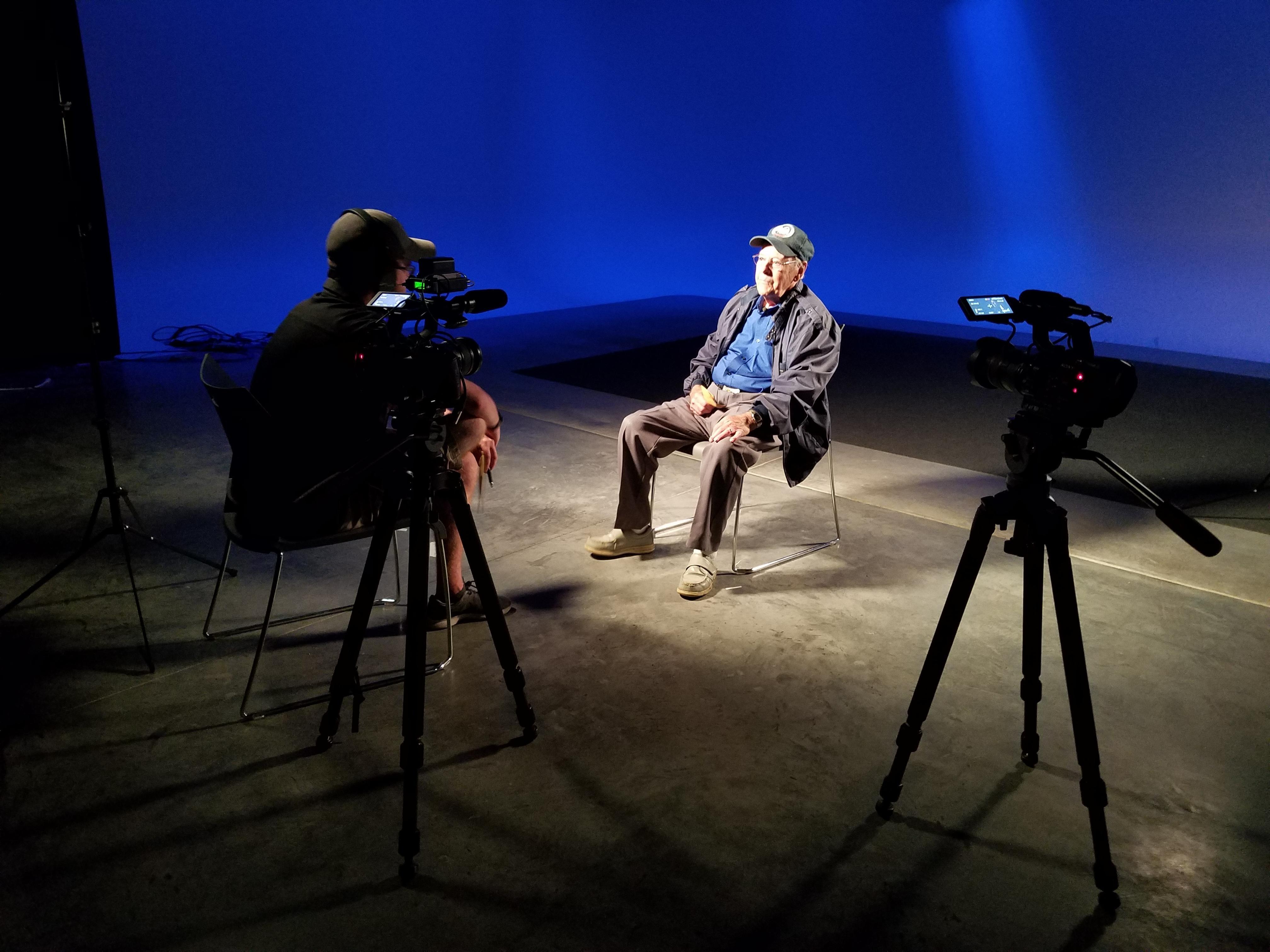Jergenson recalled that after he was drafted, they took the bus to Fort Snelling. "We got our wax cleaned out of our ears and there were people laying all over the ground. It was a shock too, of some kind. That was part of our basic training," Jergenson said. "Then the rest of the basic training was in the desert, mind you hard, was really hot. I had little diesel train, diesel engine, so that's probably one of the reason I got to be in this tanker."
After a year of training in the States, Jergenson, along with 2,200 other U.S. troops boarded the cruise liner Santa Paula in New York. Their destination: North Africa. "We took turns down below and up above, vice versa every other day. Took I think 10 or 11 days because we zig zagged because we knew that there's submarines around," Jergenson remembered. "One morning, before we woke up, they started dropping depth charges. So they must have spotted something."
Jergenson arrived in North Africa in 1944. After several months there, his tanker would move into Italy where allied forces were fighting to push through German defenses. Jergenson said that their main job was to pick up tanks that had been damaged and bring them back to their ordinance where they could be repaired.
Jergenson remembered that it rained—even snowed a little bit, but didn't really freeze—and some of his comrades got trench foot. "I went down to the motor pool and found an inner tube, and some bailing wire. I slipped them right over my shoes because, if you have the wet shoes, do you know what it's like trying to get a few minutes sleep with shoes? That was pretty tough," Jergenson said with a laugh.
He remembered the time that they stopped in a town for a while and saw someone hanging upside down — they realized that it was Mussolini and the rest of the government. They had been overthrown by the Italians. "I don't know how they ever overthrew the government. Those Italians were more lovers than fighters," Jergenson said.
After the was ended in Italy, they traveled all the way through Italy and up on the Northern border. "17-year-old boys or younger that were given a 88 anti aircraft. That was one the most dangerous terrific weapons that the Germans ever made. Most detrimental thing," Jergenson said. "And our barracks bags never kept up with us. They've all went to Texas some place, and I had pictures in one thing, and lots of things in there that I would have liked to had. I met my girlfriend the day before I shipped overseas."
Jergenson recalled one day the first Sergeant came around and told them they were going to have a church service in the Fiat factory. "I grew up in a Christian home and everything but I wasn't too too concerned about what I believed, so after the Sergeant got done preaching, I realized that I need to have some faith in Jesus," he said. "So that was one of the most important things that ever happened to me in my life."
Following the interview at Pioneer PBS, David concluded his trip with a visit to the Fagen Fighters World War II Museum. After touring the hangers, David got the flight of a lifetime in an original Vultee BT-13 trainer plane with pilot Evan Fagen. He even got a barrel roll out of the deal.




